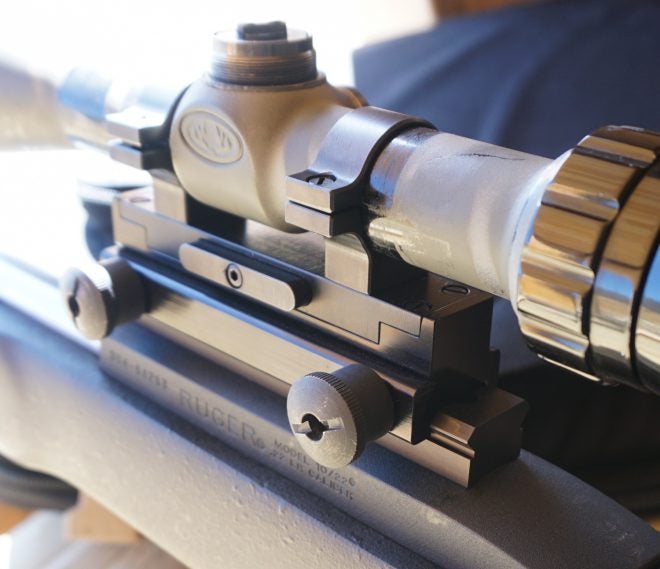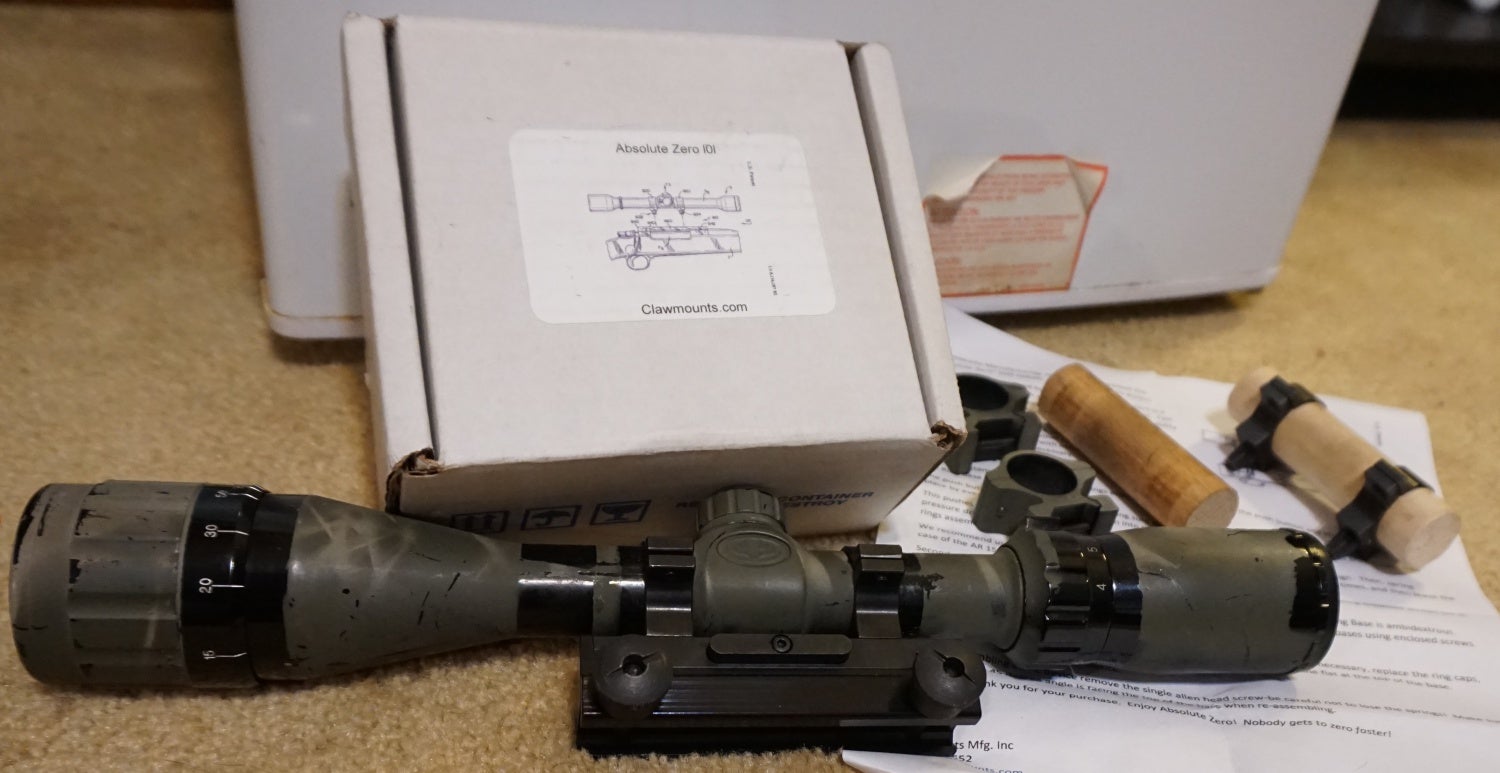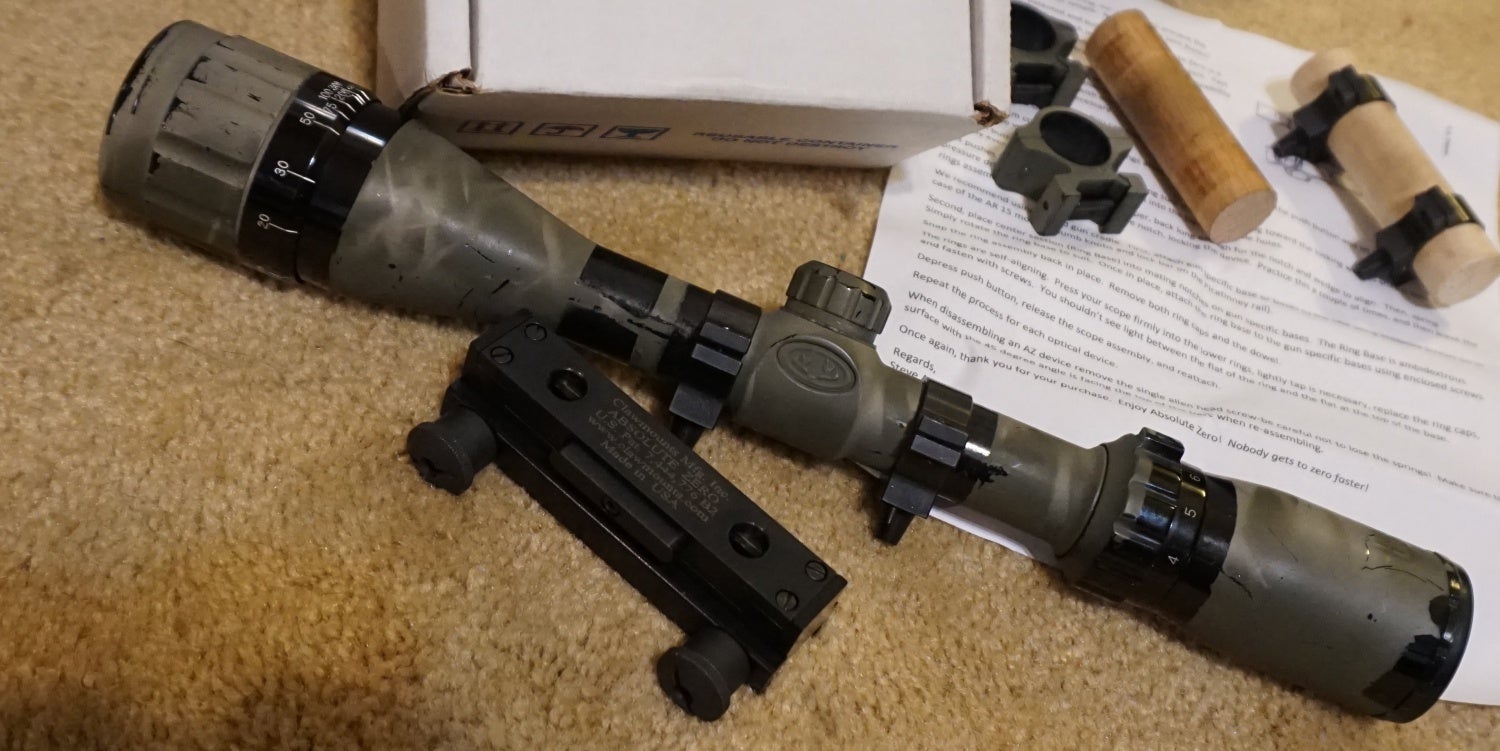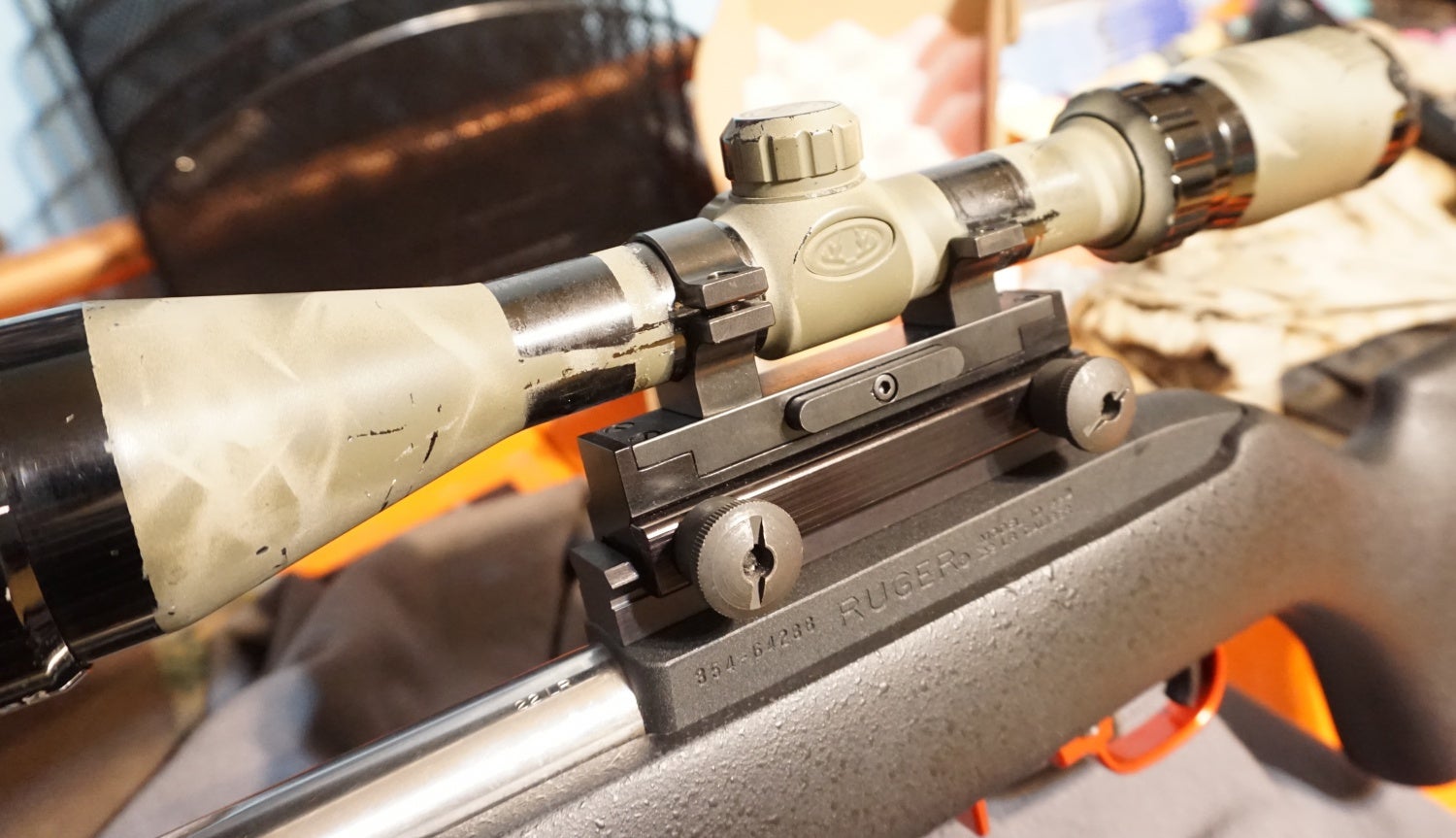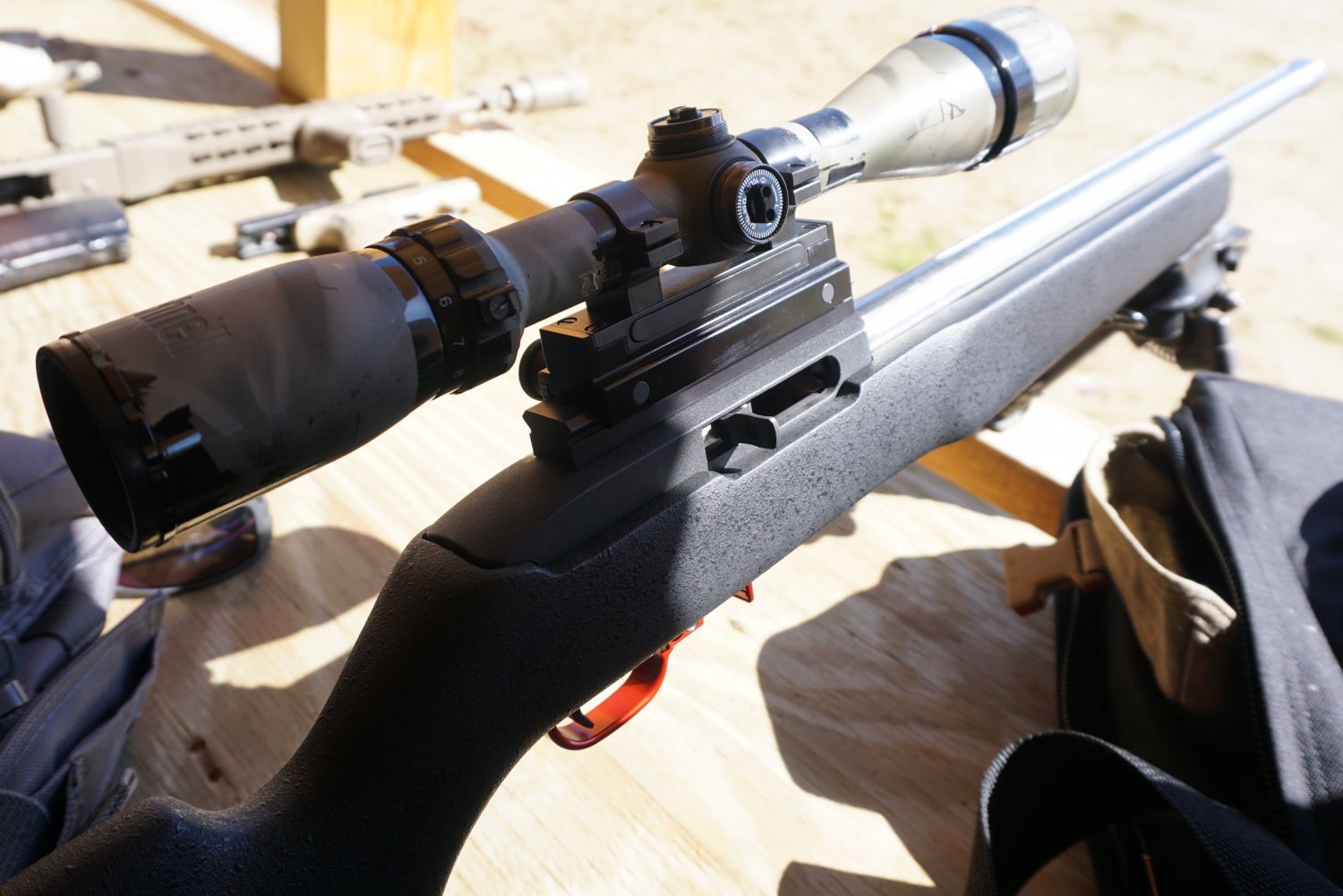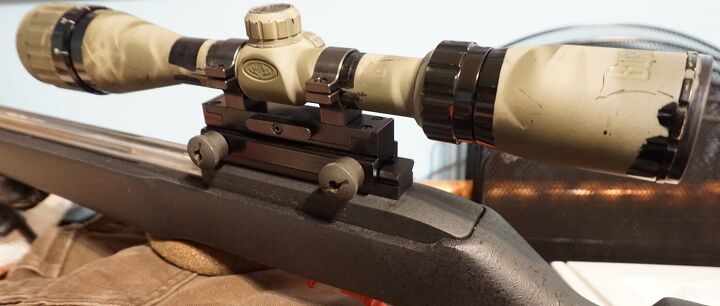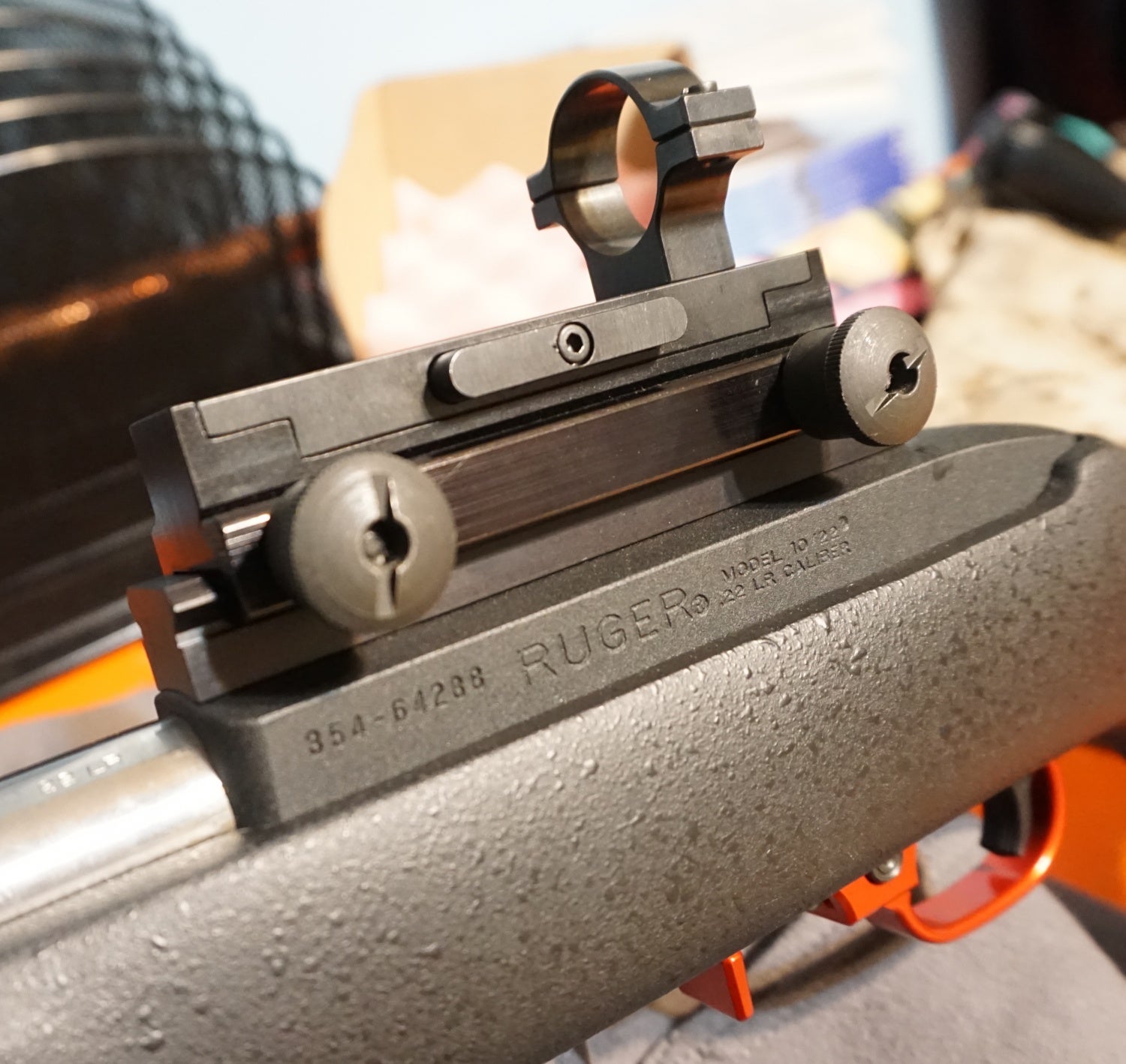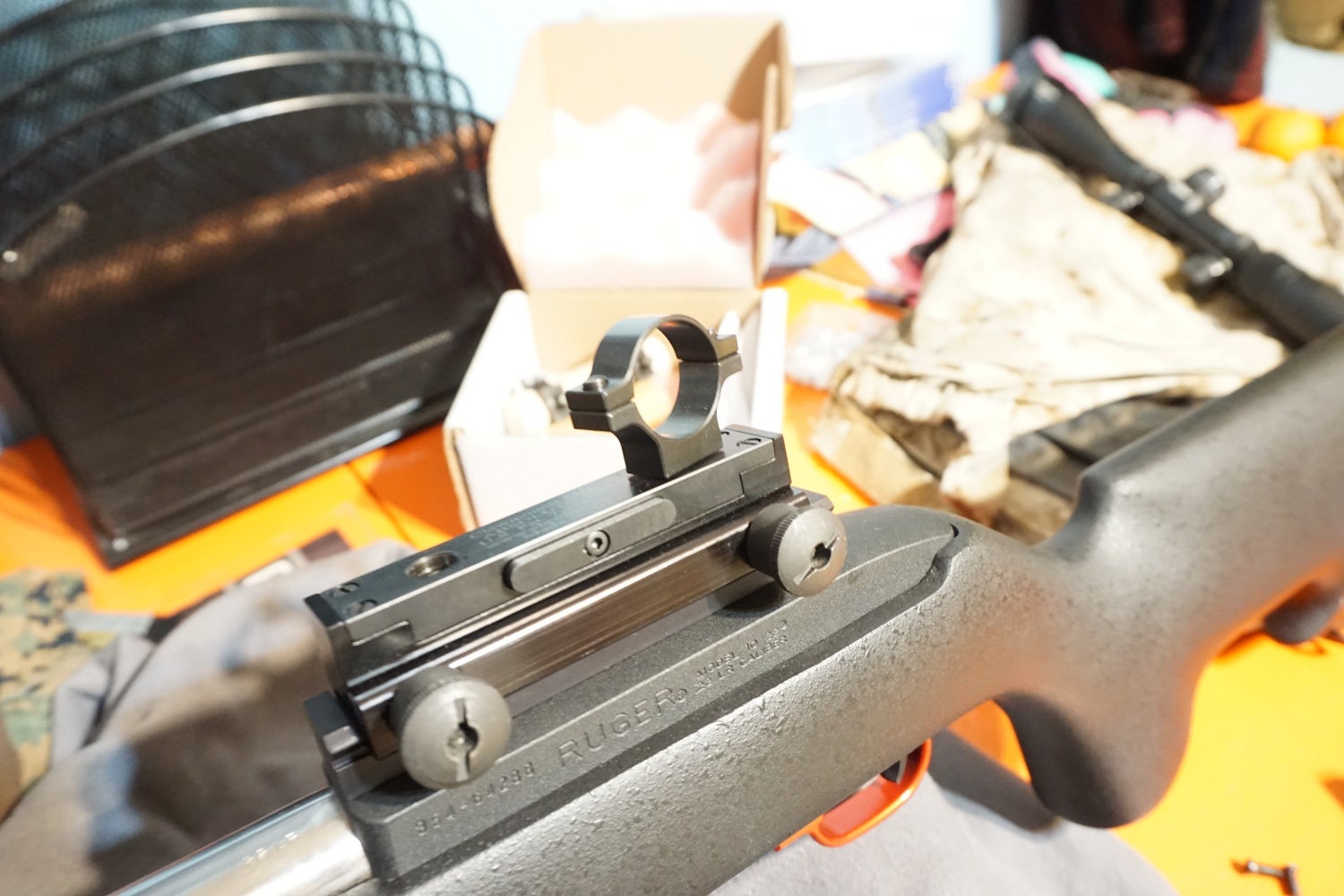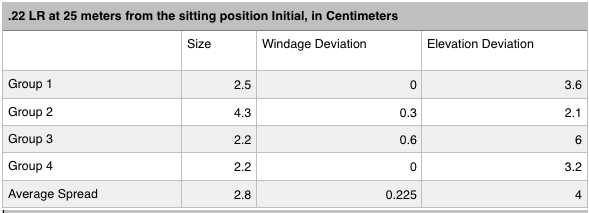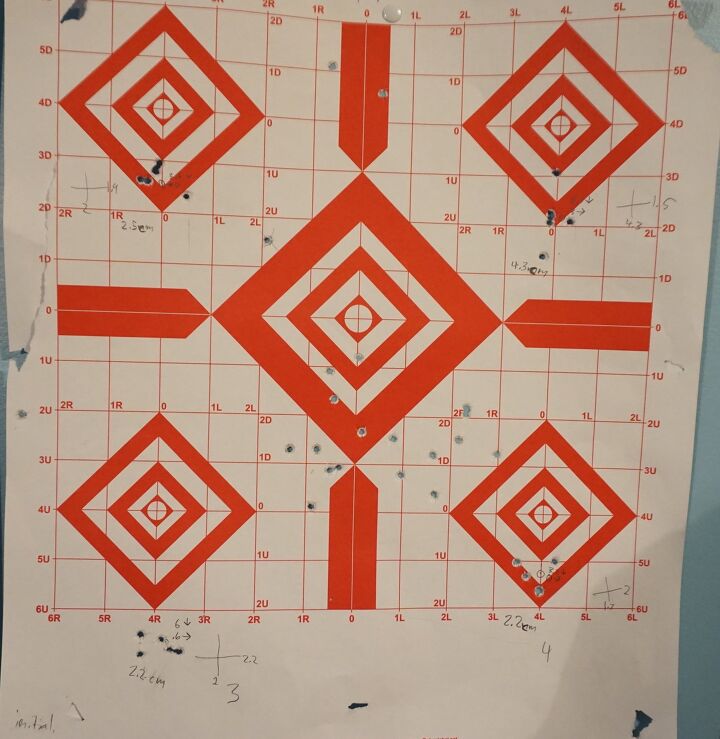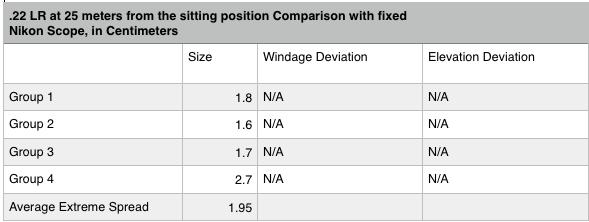Absolute Zero is a new quick detachable scope mounting system, made by Clawmounts Manufacturing based in Illinois. Claw Mounts Manufacturing makes quick detachable mounts for various iconic rifles, such as the Mauser, and Winchester 70. However with this product, the company is looking to expand into the AR market, or really any rifle with a picatinny top rail system. The system is designed to work with traditional bolt action rifles that have been drilled and tapped for scope bases, in addition to a picatinny section that the mount can attach to, and then itself mounted to the top picatinny rail of any firearm with a top rail. TFB recently received an opportunity to review the picatinny mounted Absolute Zero 101 quick detachable scope mount.
Two videos from the companies Facebook page
The scope mount comes in a small, foam padded cardboard box, with instructions, the mount itself, and two pairs of 30mm scope rings that once attached to the scope, will securely attach to the mount via a spring compressed button that holds it in place. Once this button is depressed, the scope can be lifted right out of the two sockets that keep it locked in place. To return the scope back to the mount, one simply presses it firmly into the two open ports until it clicks in place.
The company’s claim to fame is that the scope will return to zero, even when taken out of the mount for extended periods of time, or as many iterations of the scope being removed and replaced in the sockets. The videos from the company also claim that it is the best quick detachable scope mount available on the market, and we were very keen in putting this to the test.
For testing purposes, I wanted to be as methodical as possible. To achieve this, I used a Ruger 10/22 Rifle, outfitted with a Boyds stock, Kimber bull barrel, and after market trigger assembly. The rifle was built by a very reputable gunsmith and company whom I shall not mention. The scope I used for testing the mount was a Bushnell 4X12 optic, while the control rail mounted scope was a Nikon Prostaff Rimfire II with the BDC reticle. In retrospect, I should have used the Nikon for testing on the top rail with a traditional mount, then before and after firing of the Absolute Zero scope. Although the Bushnell is of lesser quality than the Nikon, the scope was adequate for the job.
The scope is mounted into the traditional ring base that the company normally offers for hunting rifles, and then that is mounted onto a top picatinny rail section, which is then mounted onto the actual rails of the rifle. Essentially the order seems to be a mount, within a mount, within a mount. Increasing precision is all about taking out the variables, so I’m curious why the company would have a setup like this. Regardless, installation was very simple. Lock the section onto a picatinny rail, unscrew the scope rings with a Flathead screwdriver, place your scope on the rings, tighten, making sure equal tension is on each screw, while ensuring that the scope is boresighted and level to the rifle. Once this is completed, unlatch the scope from the ring base and make sure it can be taken off and put back in.
The ring base has two limiting factors. First of all it is limited to only 30mm scope tubes, and two, the rings are at a set distance from each other, as that is how they lock into place. For shooters who might have different scope tube sizes, or need their rings a certain distance apart, this could lead to issues. However, for the majority of us, I don’t see this being a problem because many popular scopes on the market these days are 30mm to begin with. The company provides two scope ring sets, which is very convenient, as this allows two different scopes to be utilized on the same rifle, both having the potential of coming back to zero when either one has been removed or used for the other.
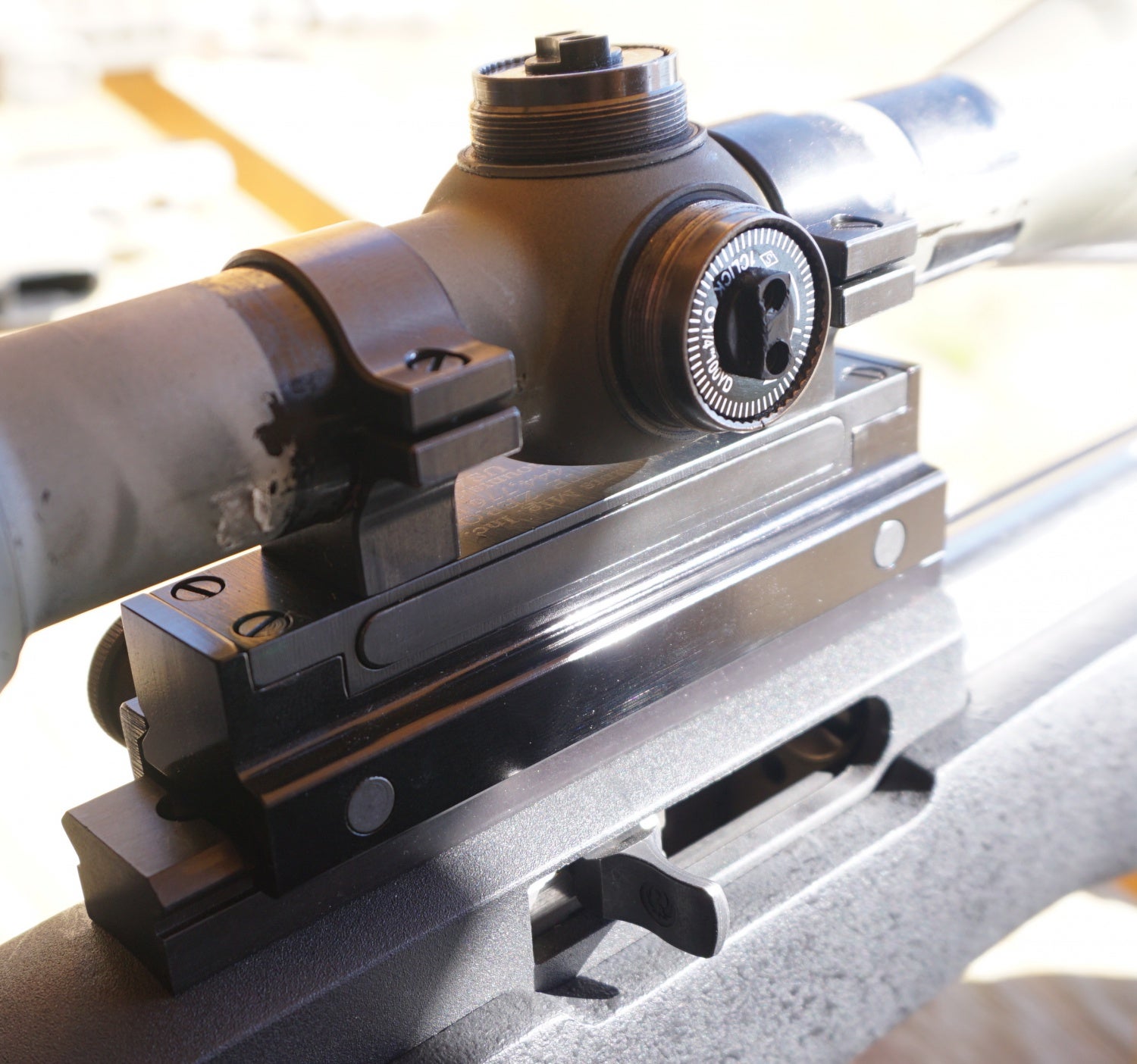
The rings not seated all the way into their sockets, as evident by the depressed plunger on the side. A firm push solves this issue.
In regards to issues of latching the ring mount back into place, I noticed two issues, before firing, and during firing. The first issue was that the rings by themselves, without the scope, can rotate in place. This isn’t very concerning because the scope isn’t even present, but I assumed that the rings would have locked down even without the scope. The second issue I noticed when it came to functionality was that if a shooter lightly pressed the scope into the ring base, there is a potential risk of the scope rings not being fully inside the base, and this could upset a shot group. However, when pressed very firmly into place, this didn’t become a problem anymore.
As for actual testing, I decided that the best way to test this claim of going back to absolute zero would be to shoot a course of fire, then take the rifle home, and continuously detach, and attach the scope from the mount over the course of several weeks. Then I would take the rifle back to the range, at the same distance/ target format/ position fire it on the same course of fire. Then I would shoot the same course of fire again, but this time with the rigidly mounted Nikon scope, directly to the picatinny rail with Weaver steel Grand Slam rings.
Ammunition used was Winchester .22 LR 40 grain round nose, while I used ammunition from the same ammunition box, trying to keep the ammunition from the more or less same lot number. Distance was 25 yards on a paper target, shooting from the sitting position with the bipods folded. I used the same shooting range for both range trips. I chose a .22 LR rifle because I believe this could show results more uniformly and precisely and have the least amount of error. I essentially shot 4 groups of 5 shots each, all in semiautomatic.
After my first range trip, I cleared the rifle out and left it on a table in my bedroom. Every time I walked into the room I took the scope off, and laid it beside the rifle. Every time I left the room I took the scope and put it back on the ring base. Sometimes I forgot to do so, but over a two week period, I probably took it off and put it back on about 30-50 times. My reasoning for this test was to replicate a possible hunt where a hunter would be taking his scope off and on for various reasons, or maybe someone with a more tactical rifle, who also would be taking it off, maybe for storage or during transit. The goal of the this test was to see if the same shot placement would take place afterwards, and if it moved, by how much and to where.
The second range trip came, and I shot the same course of fire, except this time I removed the Absolute Zero mount and mounted the Nikon scope in its place, shooting another course, for comparisons sake. Below are the results in calculated form in the tables, and in pictures of the target. For the initial target, don’t mind the shots in the center as they aren’t a part of the test. Since every shot group was either low right of center, or in the middle of the center line, from the four outer square targets, I measured the windage from the vertical line (leading the point of aim) to the middle of the shot group, and then from the horizontal line (leading to the point of aim) to the middle of the shot group. The middle was established by measuring the group in terms of furtherest rounds away from each other on an X/Y plane, then dividing those measurements in half and plotting the middle of the group where those two intersected. Then I measured the distance from the plot, to the two vertical and horizontal lines leading out from the center of the smaller targets. Units of measurement are in centimeters because I found it much easier to divide and work with. I did not measure the center of the Nikon groups because I simply wanted to show the comparison between the two scopes in terms of group size.
Initial target and results
Second range trip after repeatedly taking the scope on and off.
Final course of fire with Nikon Prostaff II firmly affixed to the rail
So does the Absolute Zero actually return to zero after the scope has been taken on and off? Honestly, I would say that yes it does, but just barely. Just at 25 meters, you can notice a shift in the group location from the center line of the point of aim (middle of the small targets) to the right of that center line. In addition, the groups dropped an average of 2 centimeters, while the groups moved to the right an average of .7 centimeters or 700 millimeters. Although the scope used was a Bushnell, the scope itself cannot be blamed for the point of impact change because the deviation is consistent in both cases, the first range trip was closer to the point of aim across the board, while the second was further way, although by millimeters. There was one flyer in Group 4 on the second range trip that really skewed the results, but even disregarding that one flyer, the results wouldn’t have dramatically changed that much.
Altogether, my honest opinion is that the scope does what it was initially designed to do in the first place, and that was to create a quick detach scope mount for hunters and their rifles. Does it achieve this objective? I would say that yes it does, deviating a few millimeters at 25 meters with a .22 rifle, probably won’t translate into missing a Buck at 100-200 meters with a .270. In addition to having the ability to change out scopes very quickly, and for mounting directly to existing drilled and tapped mounts on modern day hunting rifles, the product truly excels. However, at the Absolute Zero MSRP of $200 on their website, I wouldn’t bet on it for precision long gun shooting, or AR/other top rail mounted rifles that need an optic platform. There are other companies with far more options when it comes to scope ring distance and tube size, in addition to being repeatedly precise at long range. It appears that the company, much like many other firearms companies these days, saw a spot on the AR bandwagon and decided to jump on with a new product. There is absolutely nothing wrong with this at all, but I think if this technology were around in the 1980s or 90s, it could have made a much larger difference than today.
 Your Privacy Choices
Your Privacy Choices
